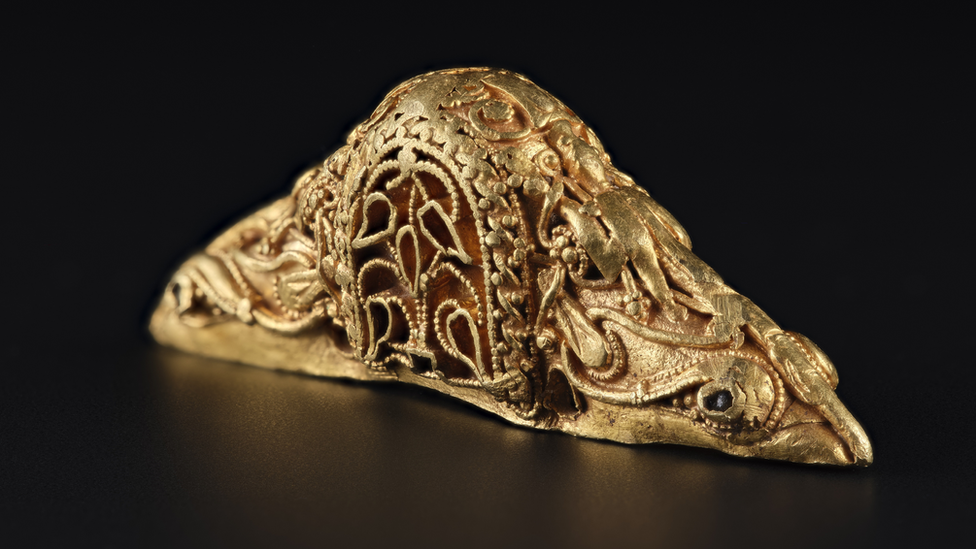Rare golden sword pommel acquired by Scottish museum
- Published

A pommel is a decorative piece attached to the bottom of a sword sometimes used as a counter-weight
An "exceptionally rare" gold sword pommel discovered by a metal detectorist near Stirling has been acquired by National Museums Scotland.
The pommel, which is about 1,300 years old, was found in 2019 and was declared to the Scottish Treasure Trove unit.
The gold decoration which would have sat at the top of a sword handle measures 5.5cm wide, weighs 25g and was valued at about £30,000.
The find has been described as "hugely significant".
Dr Alice Blackwell, senior curator of medieval archaeology and history at National Museums Scotland (NMS), said goldwork from this period was "virtually unknown" anywhere in the UK.
She said it showed the spectacular skill and craftsmanship of the early medieval period.
The pommel is thought to date from about 700 AD.
The solid gold object is encrusted with garnets and intricate goldwork which feature religious motifs and fantastical creatures.
The discovery was made at Blair Drummond towards the end of 2019 but NMS said that due to restrictions during the pandemic decisions about its acquisition were delayed.
It was allocated to them on recommendation of the Scottish Archaeological Finds Allocation Panel.
Dr Blackwell said its archaeological value was due to what it told us about important cultural, political and artistic interactions in northern Britain at this time.
She said its decoration combined elements from both Anglo-Saxon England and the kingdoms of Early Medieval Scotland.
"Early medieval Scotland is a really interesting period," Dr Blackwell said.
"You have a number of culturally distinct kingdoms and the pommel's design has taken from the different cultures and melded them together "
That melding of different cultural styles is known as "insular art" style, which was made famous by illuminated manuscripts such as the Lindisfarne Gospels.
Dr Blackwell said this fusion of styles had made it hard to determine where exactly it was made and whom it may have belonged to.
However, she said it potentially could have belonged to royalty due to the higher standard of goldwork the pommel had compared with other goldware found in this period.
"In a way this is the start of the artefact's journey," Dr Blackwell said.
"A lot of research and work is still to be done to uncover what stories it can tells us about the political and cultural landscape of Northern Britain at this time."